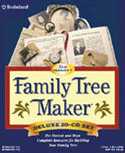Database updated 14 April 2006—this project is still live (2013) but I am having trouble updating the online copy.
Welcome to the online database of the Renowden One Name Study. If you have found your way here indirectly, you may like to read the introduction to the study.
Before you make your way into the database itself, there are a few things that need to be said.
- There are ERRORS in the data! Probably hundreds of them. If you spot any please contact us.
 I have made every effort possible not to include any
reference to living people. I know that it is not 100% but
see note 1. above. This has been done to respect
people’s PRIVACY, so if you see any
errors of this type, we would be especially grateful to be
told. SO if you can’t find yourself in the index, then
this is why. You are probably still alive.
I have made every effort possible not to include any
reference to living people. I know that it is not 100% but
see note 1. above. This has been done to respect
people’s PRIVACY, so if you see any
errors of this type, we would be especially grateful to be
told. SO if you can’t find yourself in the index, then
this is why. You are probably still alive.- All the sources for the data are included—this is an open research project. But, without wanting to get too heavy about it, please note that every page has a COPYRIGHT notice. If you find some information useful for your own research then you are welcome to use it but we would like an acknowledgement and better still, contact us and let us share your connection—we almost certainly have more that won’t go online.
Now for the bit you have been waiting for—the entrance. There are two main ways into this database:—
- The INDEX TO THE WHOLE DATABASE.
- The INDEX TO SURNAMES.
Those who are familiar with online genealogical databases
will recognise this as having been generated by ![[Off Site]](../images/world.gif) GED2HTML, a
program by Eugene W. Stark (now updated to version 3.6). The
original data and the master database at home is stored in a
GED2HTML, a
program by Eugene W. Stark (now updated to version 3.6). The
original data and the master database at home is stored in a
![[Off Site]](../images/world.gif)
 Family Tree Maker database (now
updated to version 8.0). The data was exported to GEDCOM 5.5
format which was then processed through the GED2HTML converter.
The package allows for considerable tailoring and this has been
done to
Family Tree Maker database (now
updated to version 8.0). The data was exported to GEDCOM 5.5
format which was then processed through the GED2HTML converter.
The package allows for considerable tailoring and this has been
done to
- Implement the privacy policy outlined above. This was hard.
- Generate (nearly) strict
![[Off Site]](../images/world.gif)
 XHTML 1.0 code which would pass a
validation test—I think I have won but it wasn’t
easy, however I have relaxed the DTD to
“transitional” again to allow a little code to be
added to enable older browsers to work.
XHTML 1.0 code which would pass a
validation test—I think I have won but it wasn’t
easy, however I have relaxed the DTD to
“transitional” again to allow a little code to be
added to enable older browsers to work. - Include the master reference numbers prominently to allow common communication between researchers.
- Use style sheets to gain flexibility of presentation.
- Reference photographs using the master reference numbers rather than the volatile GEDCOM cross reference numbers
- Numerous cosmetic and personalised improvements.
In order to implement this I found that I first had to
understand the ![]() GEDCOM
5.5 standard (
GEDCOM
5.5 standard (
![]() PDF document) and the way that
FTW uses it.
Having done this, it was necessary to understand the GED2HTML data structure and begin to
code an output template (thanks to Brian Gilkison for help with
this). So finally I have an output
template which you are welcome to down load (21K ZIP)
which, though not immediately usable, is extensively commented
and documented for your education. This ZIP icludes the
matching GED2HTML parameter file,
PDF document) and the way that
FTW uses it.
Having done this, it was necessary to understand the GED2HTML data structure and begin to
code an output template (thanks to Brian Gilkison for help with
this). So finally I have an output
template which you are welcome to down load (21K ZIP)
which, though not immediately usable, is extensively commented
and documented for your education. This ZIP icludes the
matching GED2HTML parameter file, renowden.ini and
CSS style sheet, renowden.css.
Note that areas of the template which I do not use, such as family group pages, internationalisation, nested surname indexes, multiple individuals on one page, LDS ordinances and structures not generated by FTW, are not coded and not tested. Also the template comes with no guarantees whatsoever, it just works for me, OK?
I have also written a short essay on Source Citations in FTW which may be of interest to those using the program.
 Webmaster
Webmaster